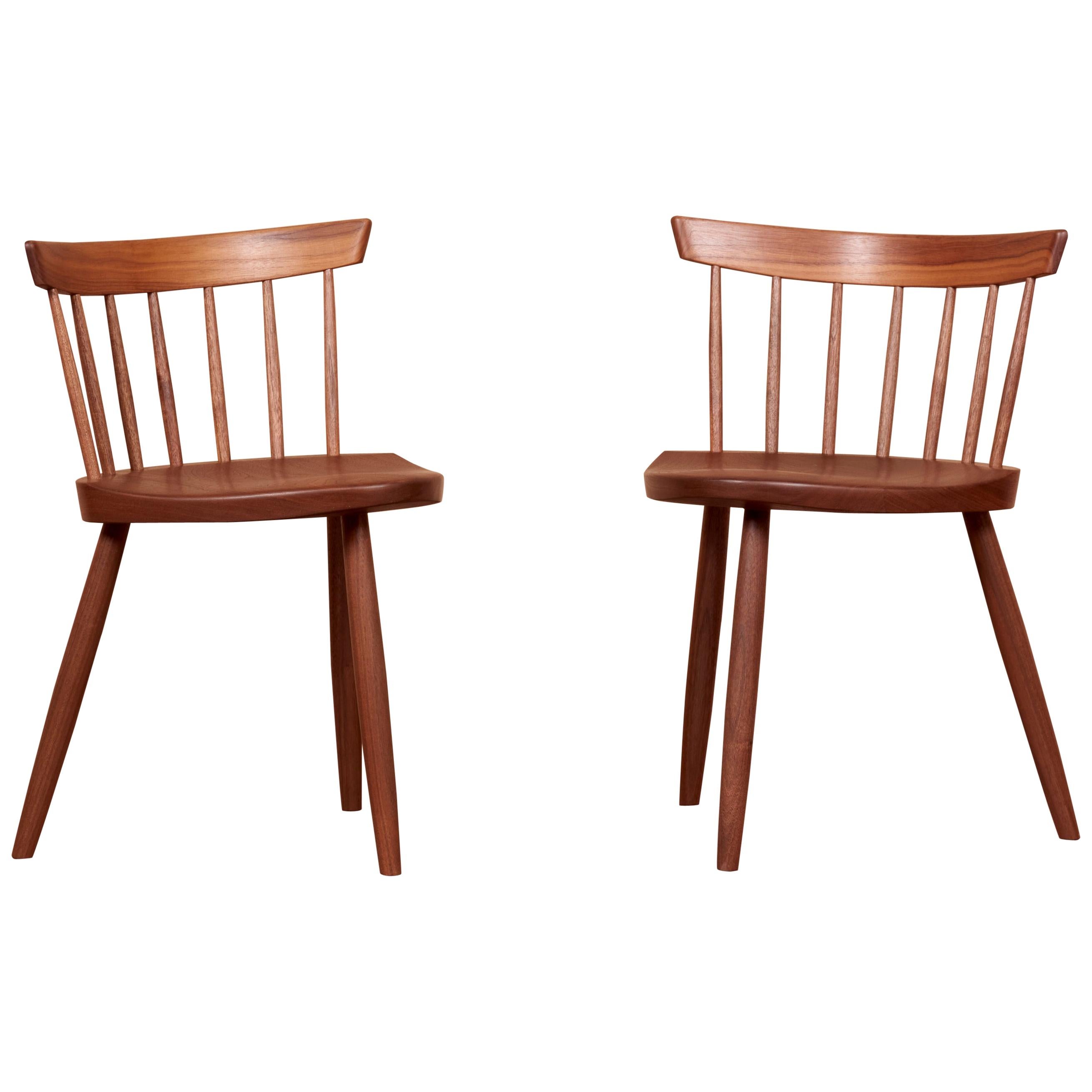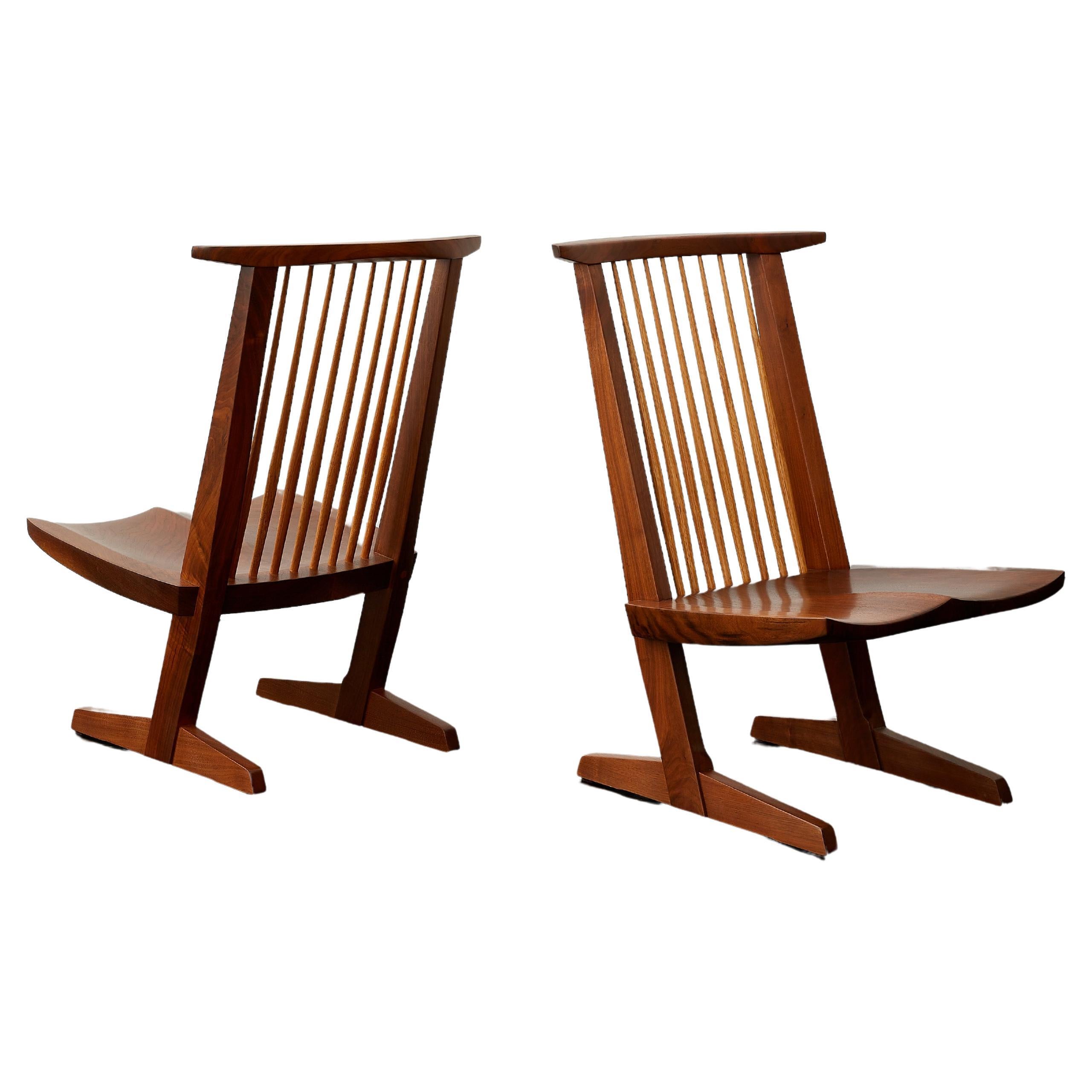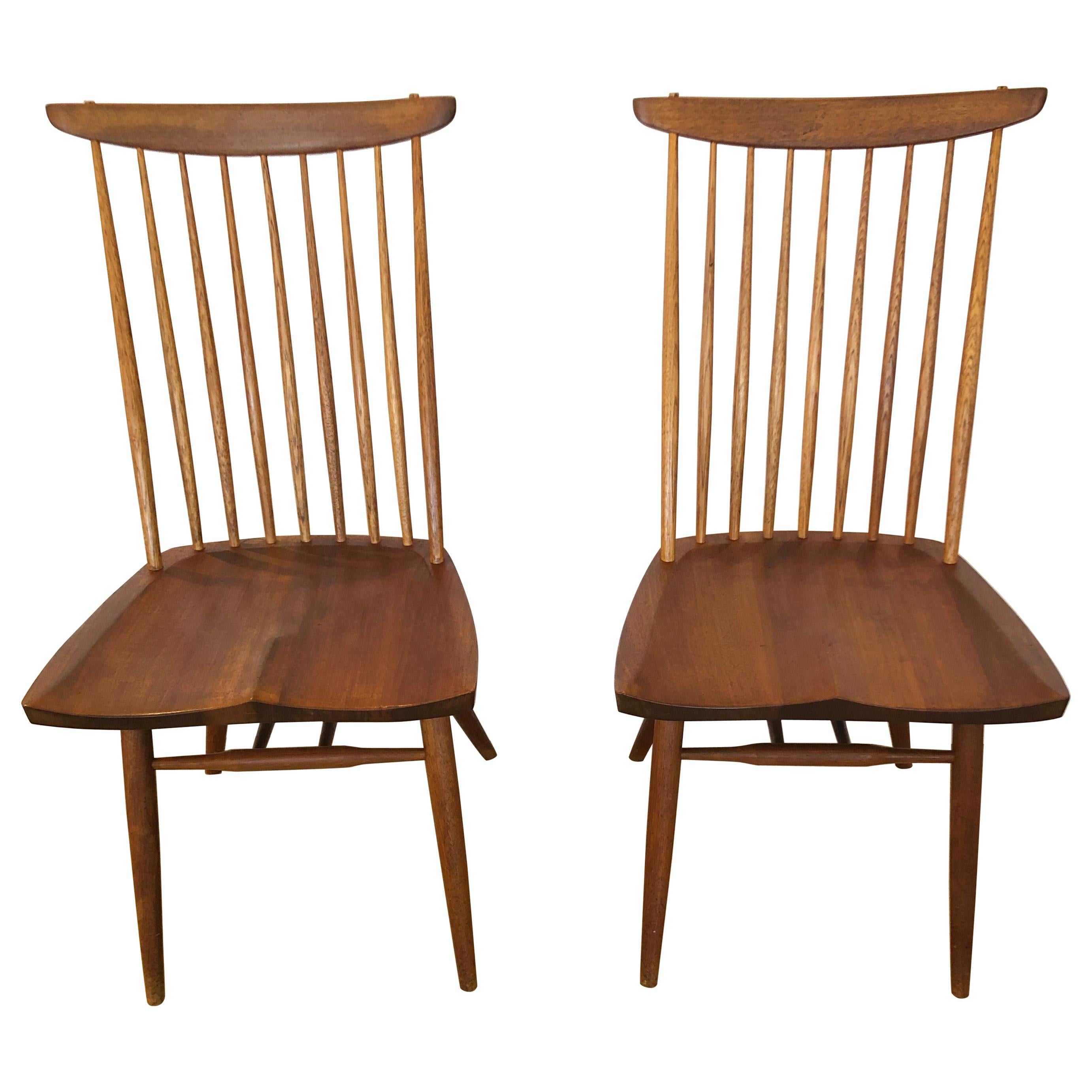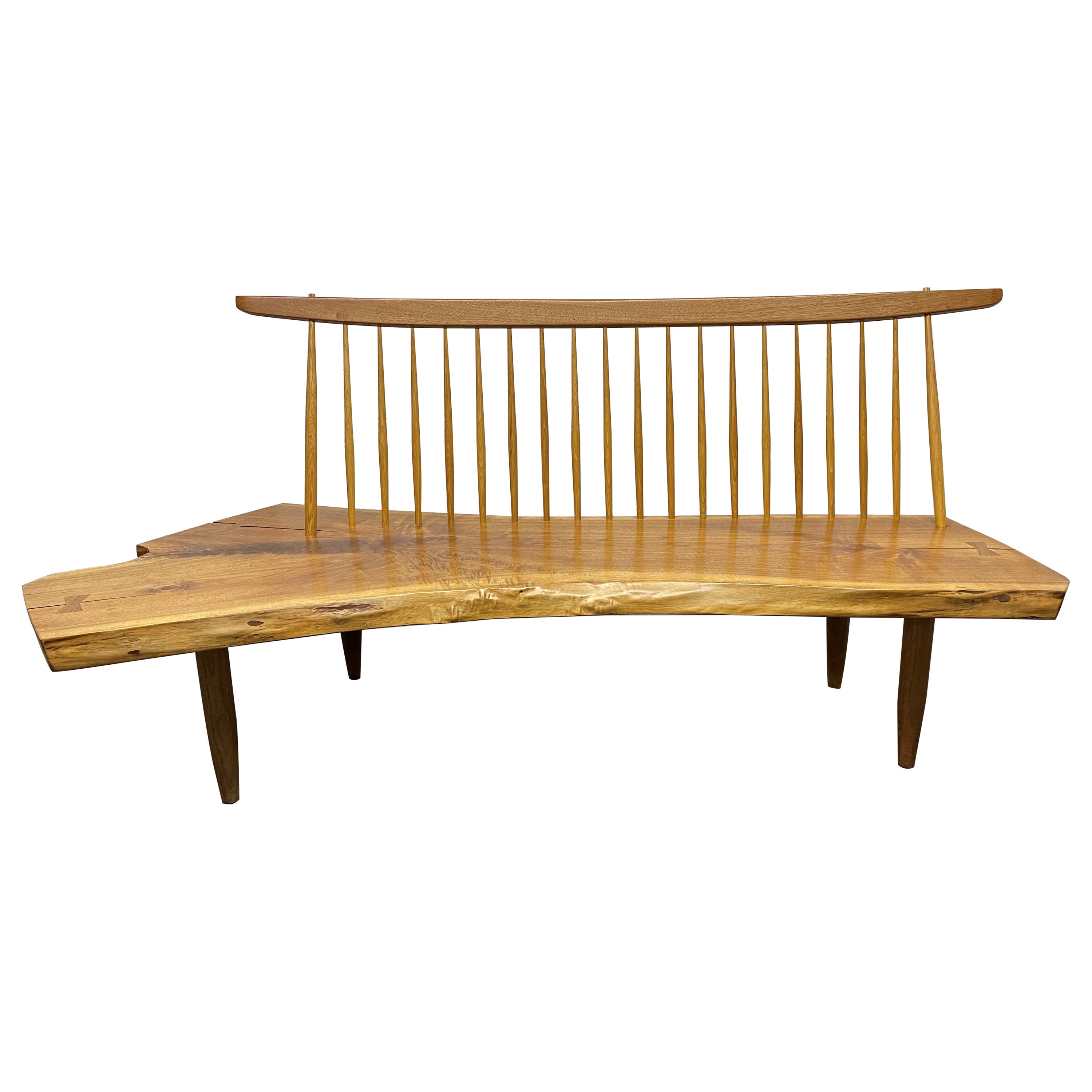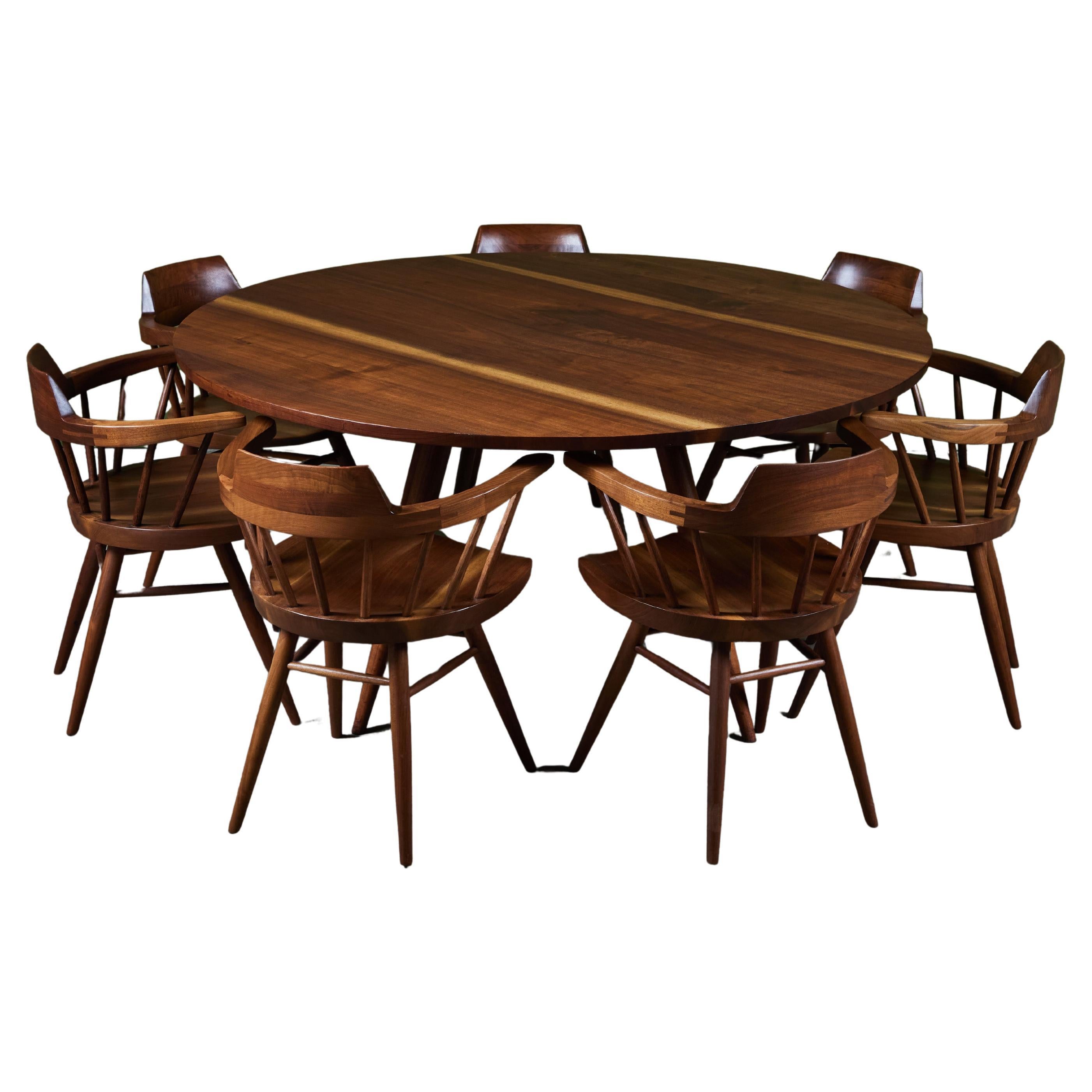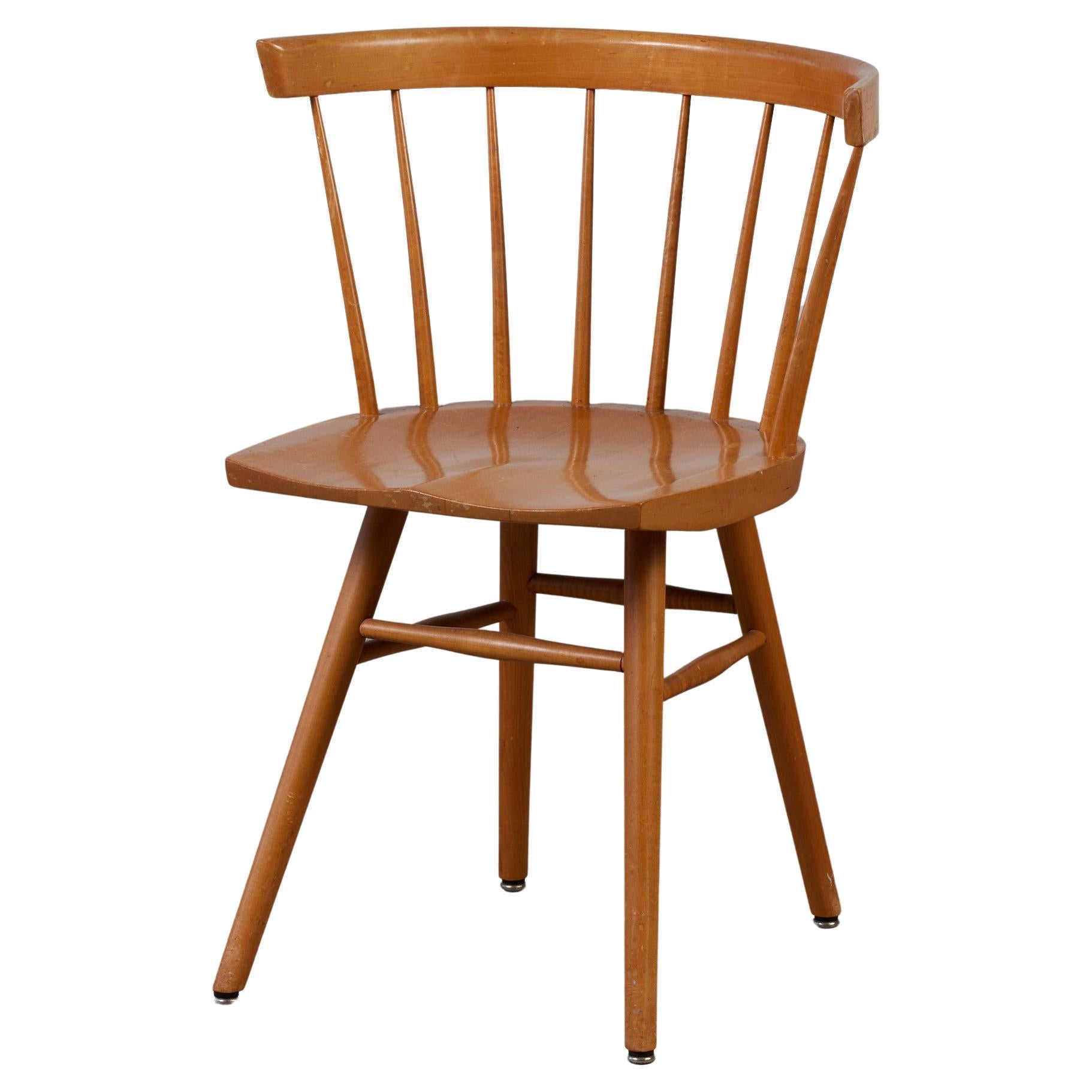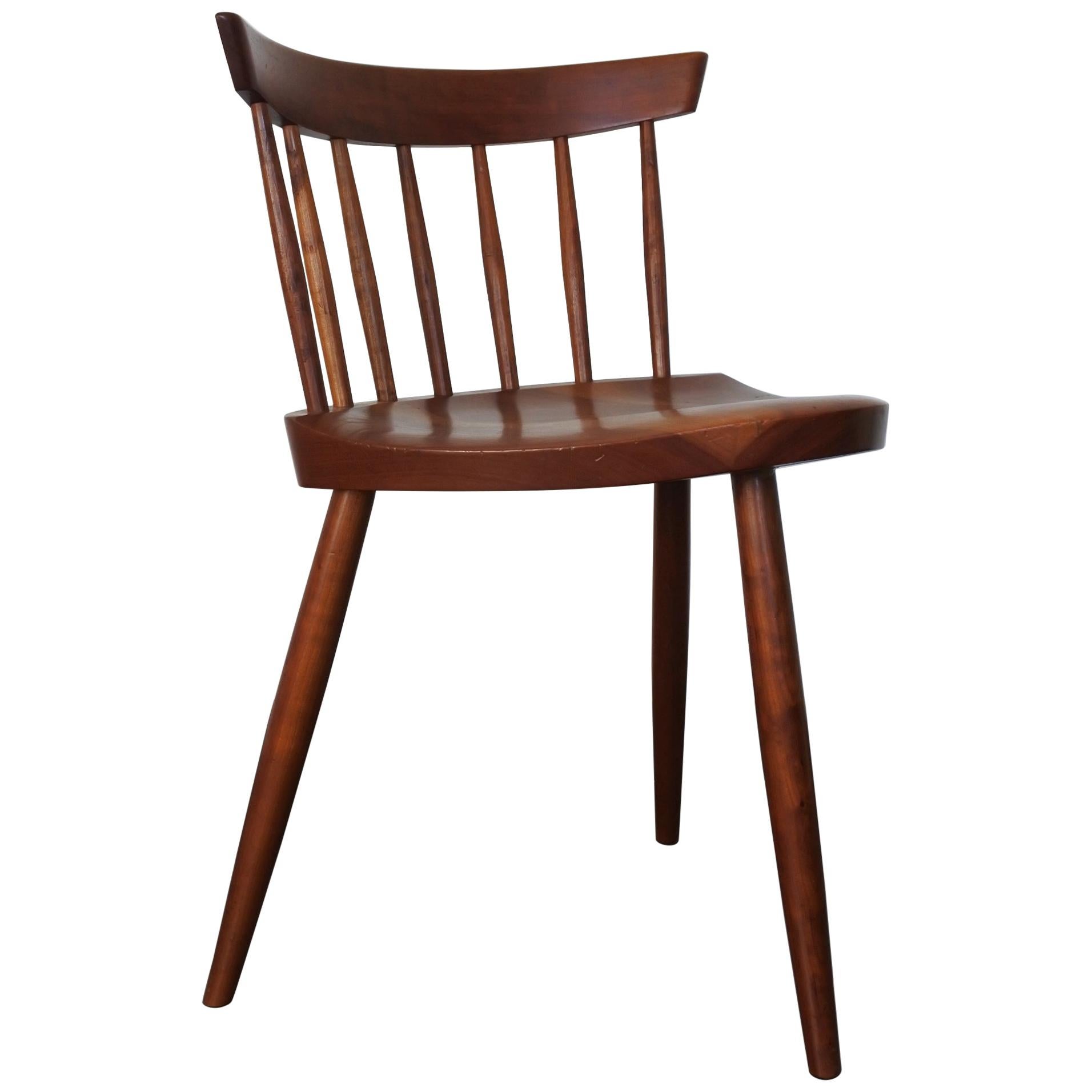

Mira Series
Named after his daughter, the Mira series by George Nakashima (1905–90) embodies the American designer’s formal training in woodwork as well as his worldly travels. A child of Japanese immigrants, Nakashima studied architecture at the University of Washington and Massachusetts Institute of Technology. Afterward, he worked in Paris and Japan and consulted on a private dormitory residence in India before returning to the United States. While Nakashima and his family — his wife and six-month-old daughter Mira — were forced into an internment camp in Idaho during World War II, he apprenticed to Japanese master wood-carver Gentaro Hikogawa.
Nakashima set up his own woodworking practice in Pennsylvania in 1943 after his family was freed. There, he created his revered solid wood pieces, including the Mira chair and Mira four-legged high chair.
Minimalist Shaker-style craftsmanship as well as the uncomplicated shapes and pure materials that characterize traditional Scandinavian design served as major influences in the Mira series. The simple walnut Mira chair — a three-legged chair with a heart-shaped seat and spindle back created around 1950 — gave way to a taller subsequent piece with a rounded seat, the Mira four-legged high chair. A 1960s-era three-legged variation of the latter saw the addition of a footstool. When the master woodworker died in 1990, Mira Nakashima hadn’t intended to take over the family business, but she did and continues the family legacy today while also creating her own celebrated designs.
Shop Designs in the Collection

A master woodworker and M.I.T.-trained architect, George Nakashima was the leading light of the American Studio furniture movement. Along with Wharton Esherick, Sam Maloof and Wendell Castle, Nakashima was an artisan who disdained industrial methods and materials in favor of a personal, craft-based approach to the design. What sets Nakashima apart is the poetic style of his work, his reverence for wood and the belief that his furniture could evince — as he put it in the title of his 1981 memoir — The Soul of a Tree.
Born in Spokane, Washington, to Japanese immigrants, Nakashima traveled widely after college, working and studying in Paris, Japan and India, and at every stop he absorbed both modernist and traditional design influences. The turning point in Nakashima’s career development came in the United States in 1942, when he was placed in an internment camp for Asian-Americans in Idaho. There, Nakashima met a master woodcarver who tutored him in Japanese crafting techniques. A former employer won Nakashima’s release and brought him to bucolic New Hope, Pennsylvania, where Nakashima set up a studio and worked for the rest of his life.
Nakashima’s singular aesthetic is best captured in his custom-made tables and benches — pieces that show off the grain, burls and whorls in a plank of wood. He left the “free edge,” or natural contour, of the slab un-planed, and reinforced fissures in the wood with “butterfly” joints. Almost all Nakashima seating pieces have smooth, milled edges. Nakashima also contracted with large-scale manufacturers to produce carefully supervised editions of his designs. Knoll has offered his Straight chair — a modern take on the spindle-backed Windsor chair — since 1946; the now-defunct firm Widdicomb-Mueller issued the Shaker-inspired Origins collection in the 1950s.
Nelson Rockefeller in 1973 gave Nakashima his single largest commission: a 200-piece suite for his suburban New York estate. Today, Nakashima furniture is collected by both the staid and the fashionable: his work sits in the collections of the Philadelphia Museum of Art, New York’s Metropolitan Museum of Art and the Smithsonian Institution, as well as in the homes of Steven Spielberg, Brad Pitt, Diane von Furstenberg and the late Steve Jobs.
